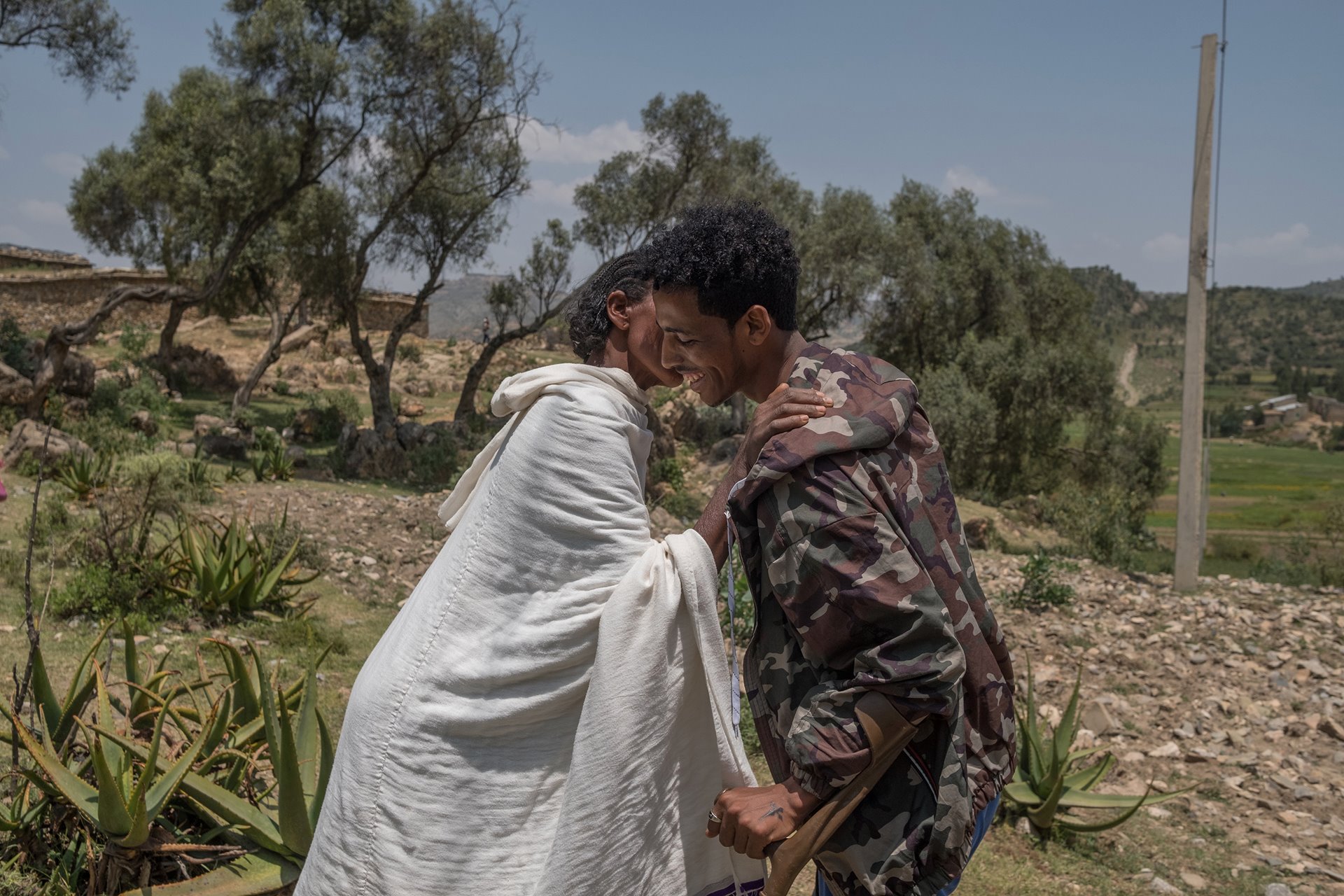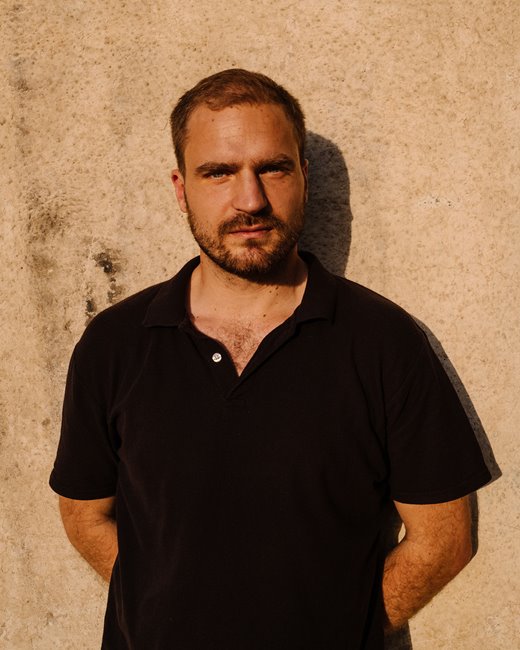Kibrom Berhane (24) greets his mother for the first time since he joined the Tigray Defense Forces, two years earlier. Saesie Tsada, Ethiopia.
Kibrom Berhane joined the TDF (the armed wing of the Tigray People’s Liberation Front) without his parents’ knowledge in early 2021, after government forces attacked his village in eastern Tigray. He fought on the frontline in Amhara state until wounded by a grenade, losing his leg, a month before a November 2022 peace agreement. Kibrom then spent time at a rehabilitation center in the Tigray capital, Mek’ele, waiting for a prosthesis, and learning to walk again. Impressed by Kibrom's determination to return to his everyday life, the photographer wanted to show the aftermath of the war, revealing its hidden consequences.
Violent internal conflict between government forces and the Tigray People’s Liberation Front (TPLF) gripped northern Ethiopia from 2020 until a ceasefire in November 2022. International coverage of the conflict was difficult, as the Ethiopian government imposed media blackouts for two years from November 2020, and again for three months in 2023. In addition, the war was subject to polarized debate on social media, and disinformation was widespread. Although a ceasefire was eventually reached in November 2022, sporadic conflicts continued to erupt in Amhara, after regional forces resisted government plans to disband them and assimilate them into the national army.
The conflict, which each side accuses the other of beginning, has led to some 600,000 deaths and forcibly displaced more than 1.4 million people, especially from fertile northwestern regions of the country. Food insecurity became a major concern as fighting was intense during successive harvests, soldiers stole livestock and vandalized farms, foreign aid was disrupted, and rains failed causing drought.
Are you a photographer and/or passionate about press freedom? Sign up for our newsletter to stay updated on our annual contest and to hear about exhibitions near you.

